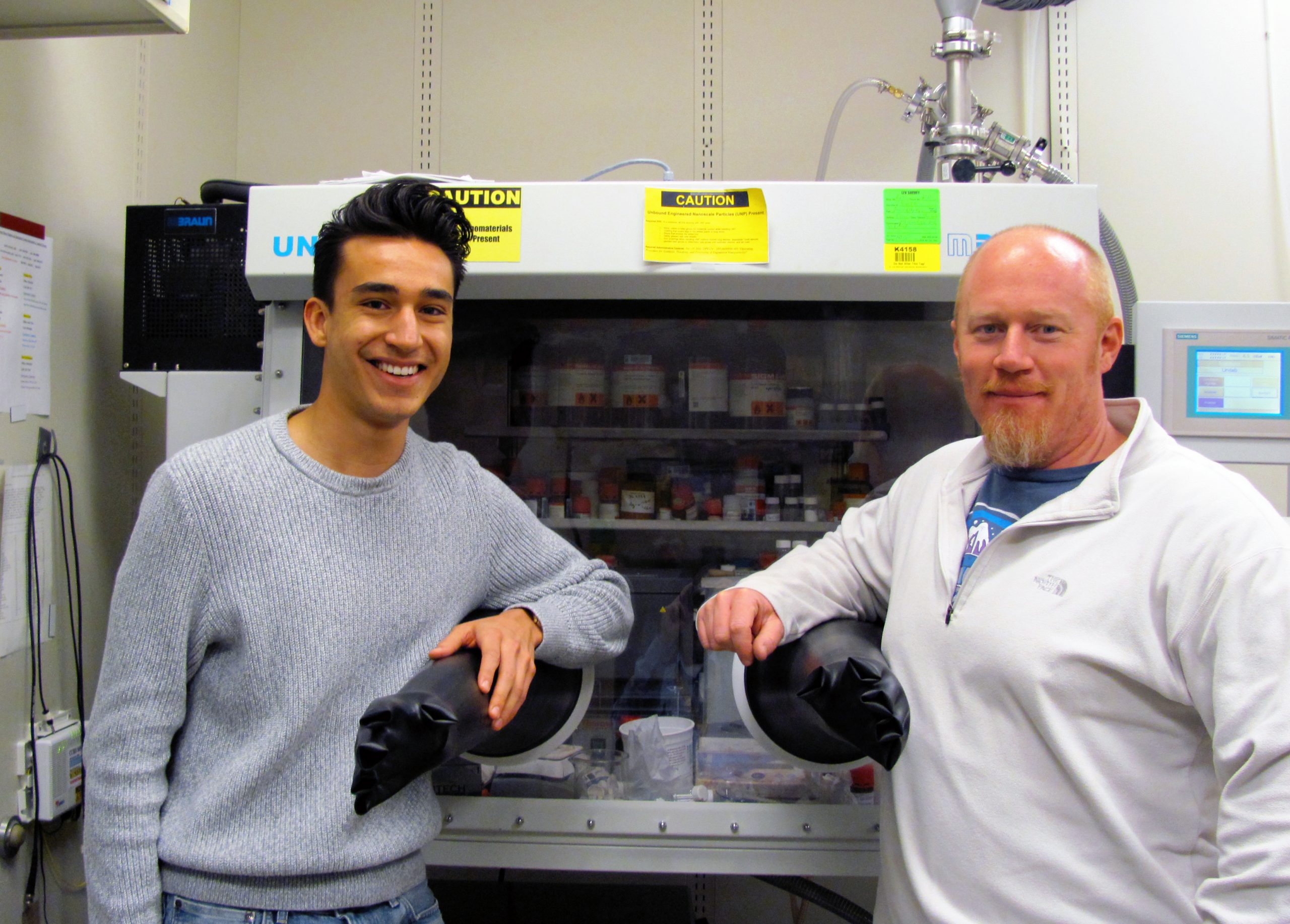ALBUQUERQUE, N.M. —Sandia National Laboratories student intern Julian A. Vigil and researcher Timothy N. Lambert captured a 2017 American Chemical Society (ACS) Division of Inorganic Chemistry Award for Undergraduate Research.

Vigil will receive a financial stipend and a plaque; his mentor Lambert will receive a plaque for permanent display at Sandia.
Vigil’s research career began as a junior in high school when he participated in an eight-week student-intern research program with Lambert. During that Sandia program, called STAR (Science, Technology and Research), Vigil quickly learned to perform rotating-disk electrode studies. His results were significant enough to make him a co-author of a technical paper with Lambert and a university researcher.
Vigil has repaid Sandia not only by mentoring newer students but also by contributing to and then leading the development of a number of promising nanoscale inorganic electrocatalysts for oxygen electrochemistry or water splitting. In addition to serving as models to understand the process of catalysis in systems of interest, Vigil’s materials also have demonstrated excellent electrocatalytic activity and stability and hence could provide a more cost-effective solution than the precious metals that are the current commercial standards.
Vigil not only synthesized materials, evaluated their electrocatalytic performance and performed background literature searches, he eventually — while still an undergraduate at the University of New Mexico — wrote the main draft of five of his seven peer-reviewed publications in Electroanalysis, Journal of Physical Chemistry C, Chemical Communications, ACS Applied Materials & Interfaces, RSC Advances, Journal of Materials Chemistry A, and Journal of Physical Chemistry C. Vigil was first author on three of the papers. Two more manuscripts, all with Lambert, are in preparation. The paper from his high school years has been cited at least 33 times; his undergraduate work has received 61 additional citations.
Meanwhile, Lambert has mentored Vigil to become a productive independent researcher in the laboratory and has educated him on professional aspects of science. These include how to present at national meetings, the importance of aiding in peer review, maintaining proper laboratory Environment Safety and Health documentation, keeping chemical inventories and more.
Vigil was designated a 2016 Barry Goldwater Scholar, based on the strength of Vigil’s academic talents applied to the comprehensive educational research program developed by Lambert.
“The tailoring of our program to fit Julian’s part-time schedule is helping him to succeed and develop as a scientist,” Lambert said.
The joint ACS award will be presented at the organization’s national meeting in San Francisco, April 2-6. As part of his award, Vigil will give an invited talk during the Inorganic Division-sponsored “Frontiers in Undergraduate Research” symposium. Vigil’s talk is titled “Advances in Manganese- and Cobalt-based Nanostructures for Oxygen/Hydrogen Electrocatalysis.”
Vigil also has received a Churchill Scholarship, named in honor of the late British prime minister. Each year, the program chooses 14 students to study at the University of Cambridge in England for a one-year master’s degree program.
Said Vigil, “A lot of work in my studies and research made me competitive for the scholarship, but I also owe a lot of the credit to the many great mentors I’ve had in the faculty at UNM and the technical staff at Sandia Labs.”